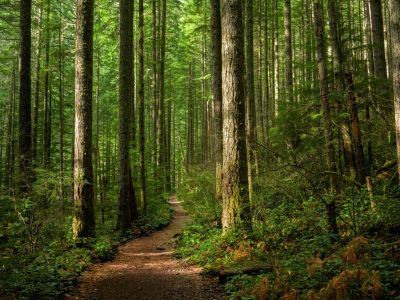Hardwood and Softwood Trees
The first thing to learn about hardwood and softwood trees is that the trees’ wood is not necessarily hard or soft. But “softwood vs. hardwood trees” became a thing in the 18th and 19th centuries and, at that time, it did refer to the heft and weight of the trees. Farmers clearing their land on the east coast in those early days used saws and axes and muscles when they logged. They found some trees heavy and difficult to log. These — mostly deciduous trees like oak, hickory and maple — they called “hardwood.” The conifer trees in that area, like eastern white pine and cottonwood, were fairly light in comparison to the “hardwoods,” so these were called “softwood.”
Softwood or a Hardwood
As it turned out, all deciduous trees are not hard and heavy. For example, aspen and red alder are light deciduous trees. And all conifers are not “soft” and light. For example, longleaf, slash, shortleaf and loblolly pine are relatively dense conifers. Over time, the terms began to be used differently and more scientifically. Botanists realized that the primary difference between softwood and hardwood is in the cell structure. That is, softwoods are trees with wood comprised largely of long, thin tubular cells that carry the water through the stem of the tree. Hardwoods, on the other hand, carry water through larger diameter pores or vessels. This makes hardwood trees rough, or “hard” to saw and machine.
Differences Between Softwood and Hardwood
Currently, the lumber industry has developed hardness standards to grade different products. The Janka hardness test is perhaps the most commonly used. This test measures the force required to imbed a steel ball into the wood. Applying this type of standardized “hardness” test makes the question of softwood vs. hardwood trees a matter of degree. You can find a Janka hardness table online listing wood from the hardest (tropical hardwood species) to the softest. Deciduous trees and conifers are quite randomly mixed in the list.
